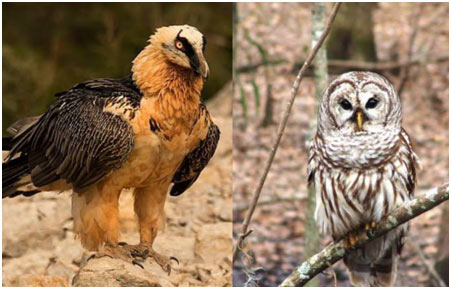Most Dangerous Birds in The World
For most people birds would rank quite short on a list of most terrifying animals – and rightfully so. The majority of birds are too small and lacking in natural weapons to inflict all but the most unimportant of injuries. They have been available in a range of types, sizes, and colors and, as such, they have actually been commemorated in practically everything -from business logo designs to government and political party emblems, to haute couture and accessories, kitchen products, and a host of other stuff. The most noteworthy, obviously, is the dove which has been a charming sign of the evasive peace.
But size and strength aren’t the only weapons in the killer bird’s armory. Dagger-sharp beaks, crushingly powerful claws, and even toxin are all on the list not to mention strength in numbers. Anybody who has been dive-bombed by mad crows or seagulls will know about this, as will anybody know about the traditional movie “The Birds”.
Fiction aside, birds can be hazardous, even fatal– let’s not forget they are the direct descendants of the dinosaurs. Listed below we have actually put together a list highlighting some of the most unsafe birds worldwide.
1.Southern Cassowary
The southern cassowary is most likely the most hazardous living bird in the world. It’s a bird that could certainly trigger a deadly attack on people, much like ostriches. Thinking about the size, Southern Cassowary is the second biggest bird in the world– weigh between 75– 80 kg and up to 5.1 in height. Like ostriches, the legs are the most effective weapon of cassowaries. There are 3 toes on each leg of cassowaries. These toes are equipped with 5 inches long razor-sharp claws. So, a single strike from a Southern cassowary could lead to the breaking of bones, crucial injuries, and even death.
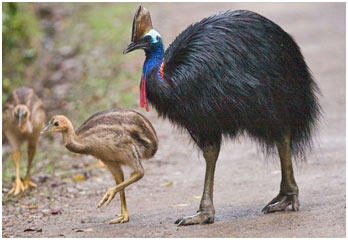
Likewise, cassowaries are understood to leap on top of the victim. In such a case injury can be really crucial or may even lead to death.
2.Ostrich
The African ostrich is the largest non-flying bird on the planet and the only staying and enduring ostrich species after the Arabian Ostrich has actually come to oblivion. It looks amusing; however, it threatens. Its size is equally intimidating in that it stands approximately 7 ft tall and weighs about 240 pounds. It may not fly however Ostrich runs with a speed of 43 miles/hour. They primarily assault intruders, including humans, specifically when they see a danger to their kids or their environment. African ostrich can kill their target within seconds just.
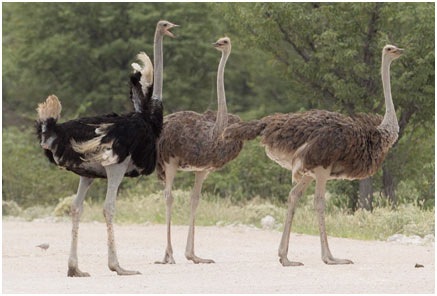
In regards to human beings, ostriches are the only bird that kills people on a regular basis. Presently around 2 or 3 people are seriously hurt or killed each year by ostriches putting them somewhere between grizzly bears and wolves statistically.
3.Emu
The emu is the Australian answer to the ostrich. Although a fair bit smaller sized than its African cousin emus are still large, powerful birds standing at up to 6ft+ (1.9 m) high and weighing 150lbs (70kg). Much of this weight is concentrated in their thigh muscles and their legs are amongst the strongest of any animal– powerful sufficient to tear down metal fencing or deliver a kick that would put Bruce Lee to pity. In addition, the emu is equipped with sharp claws measuring a number of inches long which are capable of inflicting serious injury, if not death.
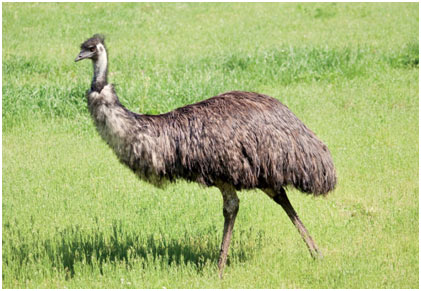
In general, emus do not impose danger to humans; they are normally thought about as friendly and inquisitive, even if this does periodically include a peck. But similar to any wild animal of this size with considerable natural weapons they have the prospective to be harmful and individuals are routinely hurt by emus.
4.European Herring Gull
Measuring up to 26 inches in length, the European herring gull is a big gull found throughout Western Europe. These gulls are well-known for both stealing food and attack on humans. They have a wingspan of 49– 61 inches and up to 2.6 long, razor-sharp bills. So, major injuries are sure from the herring gull attacks.
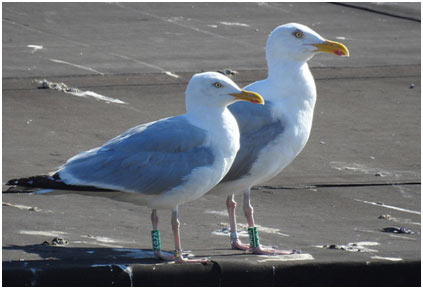
Like other birds, European herring gulls also end up being more aggressive and attack during nesting season. You need to keep a safe range from these birds due to the fact that the assault in a group. If one herring gull is alone and being provoked it would right away call for help from other adult birds. Such an incident would lead to a group attack from European herring gulls.
5.Harpy Eagle
The South American harpy eagle is most likely the most hazardous bird never to have killed a human (at least as far as I might find out). This type is among the largest of all the eagles, simply behind the Steller’s sea eagle for sheer size. However, where the harpy eagle might lack a number of inches it more than makes up for in power.
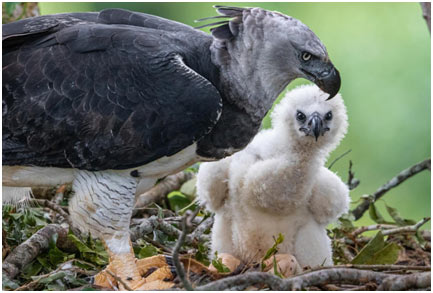
A completely grown harpy eagle may weigh approximately 20lbs (9kg) and have a wingspan of over 6.5 feet (2m). Taking a trip at speeds of up to 50mph (70 km/h) this bird is going to cause some severe damage when it slams into its prey. However, it is the harpy eagle’s talons that are its main killing execute. With claws like meat hooks measuring up to 5 inches (13cm) long and a grip strong enough to crush bones these can efficiently quickly kill the unfortunate victim.
6.Mute Swan
Weighing up to 28 pounds mute swan is among the biggest waterfowls native to Europe. They live in ponds, rivers, wetlands, and inland lakes. The wingspan of this big bird also determines up to 2.4 meters. But remember that they are aggressive and can pose threat to you. The attack from mute swans on humans mostly happens during their nesting time, in the spring season. Nesting swans safeguard their zone vigorously.
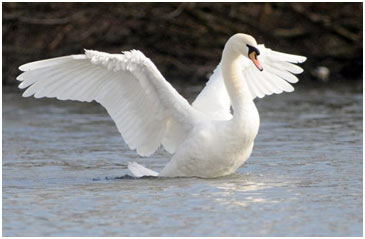
It’s much better to keep a safe range from mute swans, specifically children. If you go near-mute swans would make a fast approach with hissing and strike you with their strong wings. Considering their size and strength of wings their attack might lead to major injuries, especially to the eyes.
7.The Barred Owl
The Barred Owl is quite a little bird of prey compared to its contemporaries. It weighs between 2.5 to 3 pounds, so it is intended to assault smaller victims. They are discovered in the Southern United States’ overload forests. Their specialized feathers have an innate silencer so that the victims can’t hear them coming.
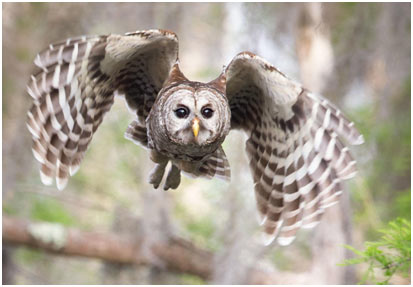
It then dives and assaults the victim’s head with their talons that are as sharp as a razor. It claws, pecks, and squeezes the target causing extreme head injuries. This conservative-looking bird generally assaults hikers in the Pacific Northwest.
8.Lammergeier
Lammergeier actually means “lamb vulture” in German. This fierce-looking bird of prey loves the bone marrows. After other predators feed and tear the carcass of its victim, what just stays is the bone marrow. Lammergeiers would grab the bones, fly them in the air, release them on the stones or rocks from a height high sufficient to break the bones, and access the velvety and delicious marrow. Lammergeiers are a risk to human beings in the near location.
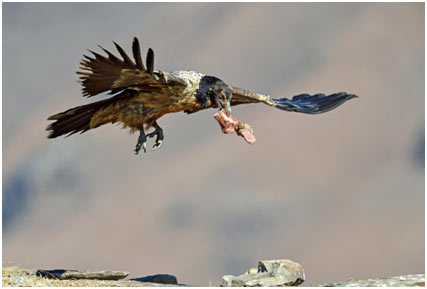
9.Snowy Owl
Native to extreme Arctic tundra, the snowy owl is one of the biggest and most stunning types of owls on the planet. As the name recommends, they are mainly white with dark gray spots. This big owl usually weighs between 3.5 to 6.5 pounds and has a wingspan as much as 60 inches.
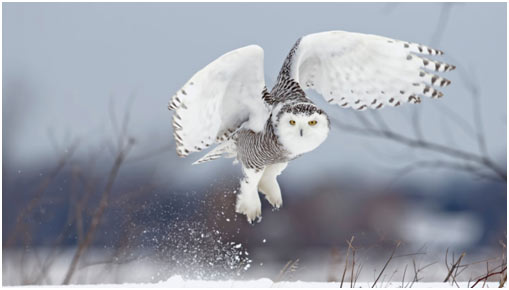
Without a doubt, people are the primary hazard of snowy owls. The list of their natural predators is really short– Arctic foxes, Jaegers, and wolves. But the snowy owl is known to protect their area aggressively. With the attack of razor-sharp talons, a snowy owl might drive their predators away. If a human is a hazard, they would target the head and the eyes. Snowy owls’ track to the eyes could be extremely severe.
10.Pitohui
Found throughout the jungles of New Guinea, the pitohuis are the only known birds to carry a toxin. There are three different species of pitohui, the most dangerous of which is the hooded pitohui (Pitohui dichrous). The skin and feathers of this rather simple-looking, brightly colored bird consist of the powerful neurotoxic agent batrachotoxin– the very same poison found on the skin of poison dart frogs. This is among the deadliest toxic substances found anywhere in nature.
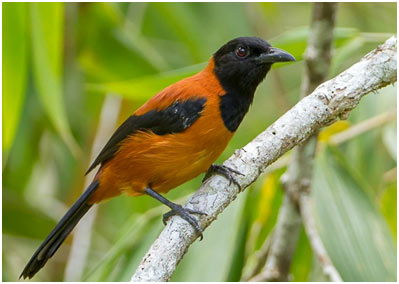
While the bird might contain only small traces of batrachotoxin simply a portion of a gram can result in paralysis, heart attack, and death. Although no recorded deaths have been credited to the pitohui this natural defense has led to it being understood in your area as the “rubbish bird” as you can’t eat it.
Do You Know??
- According to fossil records, modern birds appeared some 60 million years ago.
- Archaeopteryx is the oldest known fossil of the bird.
- Studies reveal that there are approximately 9000 to 10,000 species of birds on planet Earth.
- Stresemann’s Bristle front is the rarest bird in the world.
- North African Ostrich is the largest living bird.
- Bee Hummingbird is the smallest bird found in Cuba.
- The Marabou Stork is the ugliest bird belongs to family Ciconiidae.
- The most common bird is domesticated chicken
- The most common bird in the wild is the red-billed quelea.

